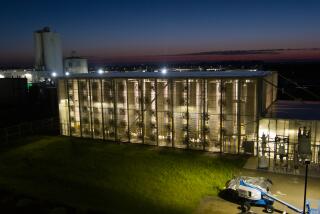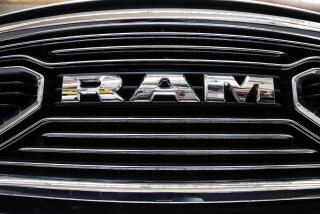‘Star Wars’ Weapon Takes Aim at Smog
- Share via
LOS ANGELES — Wielding electron plasma beams that he helped develop for the Defense Department’s “Star Wars” program, USC physics professor Martin Gundersen has homed in on a more earthly target--diesel exhaust.
To develop a high-tech tailpipe that zaps pollutants from exhaust, Gundersen, 57, has joined forces with a former Russian scientist, Victor Puchkarev, who worked during the Cold War on a rival system designed to down U.S. missiles.
Both scientists insist that they see no irony in their new alliance.
“To me it seems natural. I supported [the Strategic Defense Initiative] and opposing those quote-unquote godless Communists,” said Gundersen jokingly. “They were a threat. They had missiles pointed at us.”
“[But] on a level of applied physics, we really have common interests.”
The scientists’ test subject was a rusted diesel Volkswagen Rabbit with a leaky radiator and flat tires. It spewed plenty of pollution, allowing the team to assess the efficiency of their tailpipe.
That is, until USC Parking Operations towed it away.
Undaunted, Gundersen said they had done about as much research as they could with the $550 car they found through the Pennysaver.
Their new device, called a plasma reactor, looks something like a typical tailpipe. It sends through the exhaust high-voltage pulses that, Gundersen says, can chemically change hazardous nitrogen oxides (NOx) to nitrogen and oxygen--the molecules that make up clean air.
“My goal would be to have the air going out of the engine cleaner than the air going in,” Gundersen said. The applications for such technology could be far-reaching, he said. The Navy, under pressure to conform to state and federal environmental emission standards, has provided funds for him to develop a device to fit on the smokestacks of its diesel-powered warships.
“We are optimistic about this,” said Gabriel Roy, propulsion manager at the Office of Naval Research. “The advantages to this are that it can be easily added on and switched on and off.”
Gundersen hopes that the device, which he says also breaks down particulate matter like that in smoke, can be used on trucks, buses, trains, tractors and construction equipment.
“If I can make it work really well for even one of those things,” he said, “it would be worth every cent of it.”
The range of possible commercial applications for the plasma reactor will depend on how much power the device drains from the engine, said Mark J. Kushner, an expert in the field and a professor at the University of Illinois.
Gundersen hopes that within two years he can make the device efficient enough to drain less than 5% of the engine’s power. Now, he can reduce one of the two major types of nitrogen oxides that efficiently, he said.
“I think if it works commercially, it will be affordable,” he said. “We were shooting for less than 10% of the engine cost.”
Diesel exhaust is one of the largest and most hazardous sources of air pollution in California, and the trickiest to control.
*
Gasoline emissions are usually reduced after combustion by a catalytic converter. But few diesel systems treat exhaust this way. Diesel emissions are usually reduced by adjusting the way fuel is injected into the engine and by using fuel additives.
Though diesel engines run much cleaner than they have in the past, they face increasingly stringent federal and state regulations on nitrogen oxides and smoke.
In 1998, a new federal regulation will kick in that will reduce allowable nitrogen oxides by 20%, said David Coel, program supervisor at the South Coast Air Quality Management District.
Diesel vehicles represent 3% to 4% of vehicles in California, but emit about 40% of all nitrogen oxides, said Jerry Martin, a spokesman for the California Air Resources Board.
“The Los Angeles area is the only place in the nation in the last decade to violate nitrogen dioxide standards,” he said. “Nitrogen dioxide is what causes those beautiful purple sunsets.”
Also, nitrogen oxides are precursors of ozone, airborne particulates and nitric acid, which causes acid rain, Martin said. In people, the pollutants irritate the lungs and throat and aggravate asthma and emphysema.
Though the two USC scientists have similar technical backgrounds, Puchkarev faced a whole different set of obstacles as a scientist in the Soviet Union, including working with scant funding. “We had to build the buildings for our institute,” he said. “It was hard work.”
Gundersen, who has been working for 14 years on the plasma reactor, says he’ll stand by his environmental philosophy.
“When I was in the Boy Scouts, I was told you make the campsite cleaner than when you came there,” he said. “It’s a good way to look at technology.”
More to Read
Sign up for Essential California
The most important California stories and recommendations in your inbox every morning.
You may occasionally receive promotional content from the Los Angeles Times.











